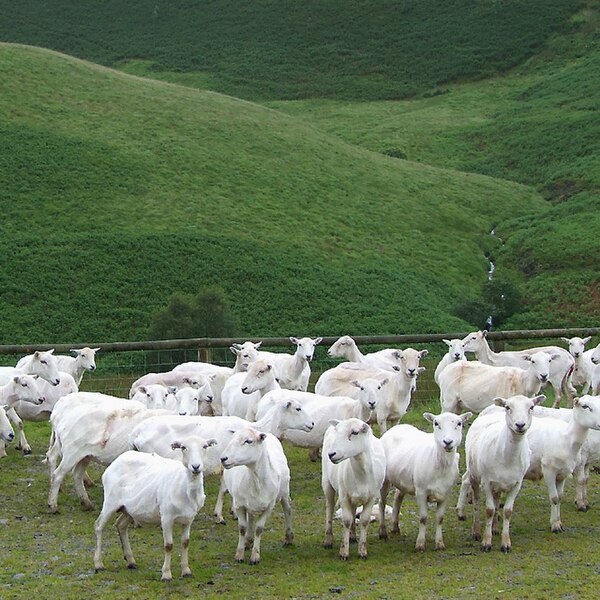Fulling, also known as tucking or walking, is a step in woollen clothmaking which involves the cleansing of woven cloth to eliminate (lanolin) oils, dirt, and other impurities, and to make it shrink by friction and pressure. The work delivers a smooth, tightly finished fabric that is insulating and water-repellent. Well-known examples are duffel cloth, first produced in Flanders in the 14th century, and loden, produced in Austria from the 16th century on.
Scotswomen walking or fulling woollen cloth, singing a waulking song, 1772 (engraving made by Thomas Pennant on one of his tours).
Manual trampling, drawing after an Ancient Roman fresco in the Fullonica of Stephanus, Pompeii. A fullonica is a fullery and laundry shop.
Fulling cloth by letting a waterfall agitate it.
A driving-stock fulling mill from Georg Andreas Böckler's Theatrum Machinarum Novum, 1661
Wool is the textile fiber obtained from sheep and other mammals, especially goats, rabbits, and camelids. The term may also refer to inorganic materials, such as mineral wool and glass wool, that have properties similar to animal wool.
Wool before processing
Unshorn Merino sheep
Shorn sheep
Champion hogget fleece, Walcha Show








